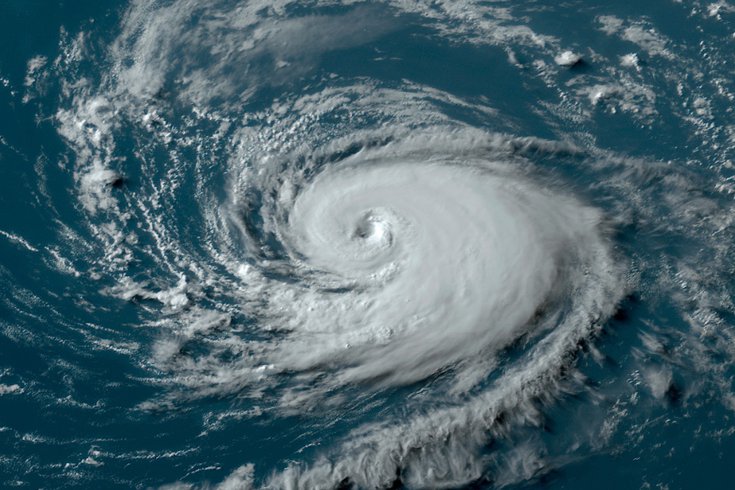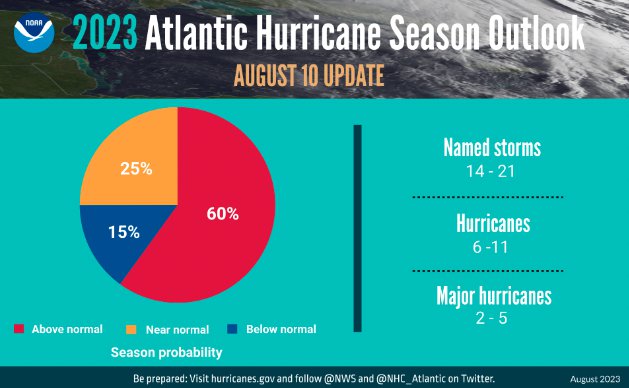
August 10, 2023
 COURTESY/NOAA
COURTESY/NOAA
Major storms like Hurricane Don, captured in this NOAA satellite image in July, are more likely to brew in the Atlantic Ocean this season, according to updated estimates.
Hurricane season could be even worse than expected this year. The Atlantic Ocean could see as many as 21 named storms and 11 hurricanes, according to updated predictions from the National Oceanic and Atmospheric Administration.
Of the hurricanes that do form over the next few months, as many as five could be "major" storms with winds of 111 mph or higher, the organization said.
The NOAA revised this year's Atlantic hurricane season outlook today after initially predicting a "near-normal" hurricane season in May. There is now a 60% likelihood of "above-normal" storm activity between now and when hurricane season ends on Nov. 30.
The NOAA is now predicting between 14 and 21 named storms this season (there are normally 14). And while we usually see an average of seven hurricanes per season, NOAA now predicts between six and 11 (we normally see just three), with anywhere between two and five being classified as "major" hurricanes.
Not surprisingly, climate change is a culprit. In a press release, the NOAA attributes this increased likelihood of a more intense storm season to higher-than-ever sea surface temperatures in the Atlantic Ocean and other evolving atmospheric conditions.
“The main climate factors expected to influence the 2023 Atlantic hurricane activity are the ongoing El Niño and the warm phase of the Atlantic Multi-Decadal Oscillation, including record-warm Atlantic sea surface temperatures,” said Matthew Rosencrans, lead hurricane season forecaster with NOAA’s Climate Prediction Center. “Considering those factors, the updated outlook calls for more activity, so we urge everyone to prepare now for the continuing season.”
While the southern Gulf region and Florida Panhandle tend to bear the brunt of Atlantic storm season, Philadelphia and the surrounding tri-state area are no strangers to the damaging effects of ever-intensifying storms. In 2021, Hurricane Ida caused historic flooding in Pennsylvania, with Philadelphia, Bucks, Chester, Delaware, York and Montgomery counties being granted a disaster declaration by the Biden administration. Not even the state’s beaver population was safe from the ravaging effects wrought by that storm. Last year, the remnants of Hurricane Ian dumped enough rain on the Philadelphia region to warrant a flood advisory being issued for coastal areas.
Since this year's Atlantic hurricane season started in June, there have been five storms that have reached tropical storm strength and one hurricane. But if the NOAA’s latest forecasts prove accurate, the storm season – and the potential havoc it can wreak – are just beginning.
Whenever she arrives, the next named storm of the season will be called Emily. And assuming she formulates, the one after that will bear a name familiar to Philadelphians: Franklin.
